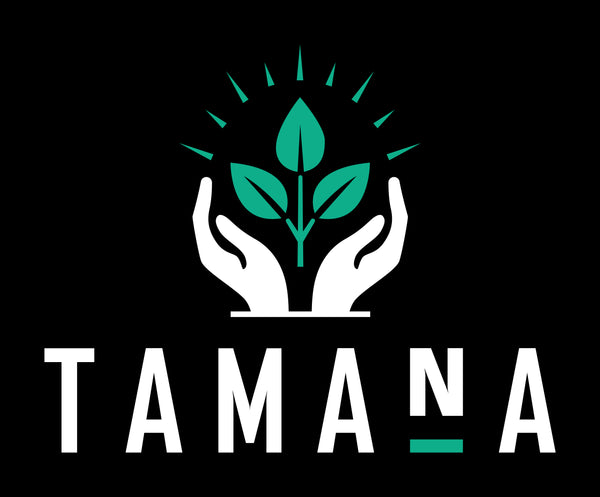
Exploring Compostable Packaging Options: Innovations in Sustainable Coffee
Exploring Compostable Packaging Options: Innovations in Sustainable Coffee
In the coffee industry, sustainability isn’t just a buzzword; it’s a necessity. From farming methods to fair trade practices, there’s an undeniable push toward more ethical and environmentally friendly practices. One of the critical areas that directly impacts the environment is packaging. Single-use plastics and non-recyclable materials contribute significantly to pollution, making compostable packaging a vital innovation for those of us who care deeply about preserving the planet.
At Tamana Coffee, our goal is to offer a truly holistic coffee experience. Part of that journey includes adopting innovative and sustainable packaging solutions that not only protect the quality of our beans but also protect the earth we all call home.
The Problem with Traditional Coffee Packaging
Traditional coffee packaging often consists of materials like foil-lined plastic, which provide excellent freshness but are notoriously difficult to recycle. Most end up in landfills, where they can take decades—or even centuries—to decompose. Considering the global scale of coffee consumption, this creates an alarming environmental issue.
The challenge lies in creating packaging that maintains the integrity of coffee while aligning with environmental goals. Luckily, advances in compostable packaging options are changing the game.
What Is Compostable Packaging?
Compostable packaging is made from organic materials, such as cornstarch, plant fibers, and biodegradable polymers. Unlike traditional materials, these break down naturally in composting environments without leaving harmful residues or microplastics.
In commercial composting facilities, compostable packaging typically degrades within a few months. Home composting may take a little longer, but the process is still far quicker and more eco-friendly than traditional alternatives.
Innovations in Sustainable Coffee Packaging
Here are some exciting trends in compostable coffee packaging:
1. Plant-Based Materials
Companies are now using materials derived from cornstarch, sugarcane, and even coffee grounds to create fully biodegradable packaging. These materials maintain durability while being safe for the environment.
2. Compostable Coffee Bags
Coffee bags with one-way degassing valves—a critical feature for keeping coffee fresh—are now available in compostable forms. These bags have an additional oxygen barrier, ensuring your coffee stays aromatic while breaking down naturally after disposal.
3. Recyclable & Compostable Hybrids
Some manufacturers combine recyclable components with compostable layers, reducing the environmental impact while maintaining functionality.
4. Edible Packaging
Although still in the experimental stages, edible coffee packaging represents a fascinating frontier. Imagine packaging that you can dissolve in water or eat, leaving no waste at all!
5. Innovative Coffee Pods
For those who love the convenience of single-serve coffee, compostable coffee pods are a game-changer. These pods are crafted from plant-based materials and can be discarded into compost bins instead of piling up in landfills.
Why Compostable Packaging Matters
Choosing compostable coffee packaging aligns with a broader mission to combat environmental challenges such as:
• Reducing Plastic Pollution: Less reliance on traditional plastic packaging helps to reduce non-biodegradable waste in landfills and oceans.
• Improving Soil Health: Compostable materials enrich the soil when broken down, unlike plastic that contributes to soil degradation.
• Supporting Circular Economies: By embracing materials that return to the earth, we close the loop between consumption and sustainability.
Challenges to Overcome
While the benefits are clear, some challenges still exist:
• Higher Costs: Compostable materials often cost more than traditional plastics, making them less accessible for smaller companies.
• Consumer Awareness: Educating consumers about how to properly dispose of compostable packaging is essential for success.
• Limited Infrastructure: Not all areas have commercial composting facilities, which can limit the potential of compostable materials.
The Tamana Coffee Commitment
At Tamana Coffee, sustainability is at the heart of everything we do. We are actively exploring compostable packaging options to ensure that our products not only delight your senses but also honor the earth. By transitioning to eco-friendly packaging, we aim to reduce waste, lower our carbon footprint, and inspire meaningful change within the coffee industry.
How You Can Help
As a coffee lover, you can take small but impactful steps to support sustainability:
• Choose Brands That Care: Look for companies that prioritize compostable or recyclable packaging.
• Dispose Responsibly: Ensure that compostable packaging is placed in the appropriate compost bin.
• Advocate for Infrastructure: Support initiatives that bring composting facilities to your local community.
Final Thoughts
The world of coffee is evolving, and so is its packaging. By embracing innovations in compostable materials, we can move closer to a future where coffee doesn’t just taste good—it does good for the planet. Together, we can reduce waste and enjoy every cup with the peace of mind that comes from knowing we’re making a difference.
So, the next time you sip on your favorite brew, think beyond the cup. Think about the packaging, the impact, and the steps we can all take toward a more sustainable coffee culture. Together, we can savor every sip, knowing that our choices are as responsible as they are flavorful.
